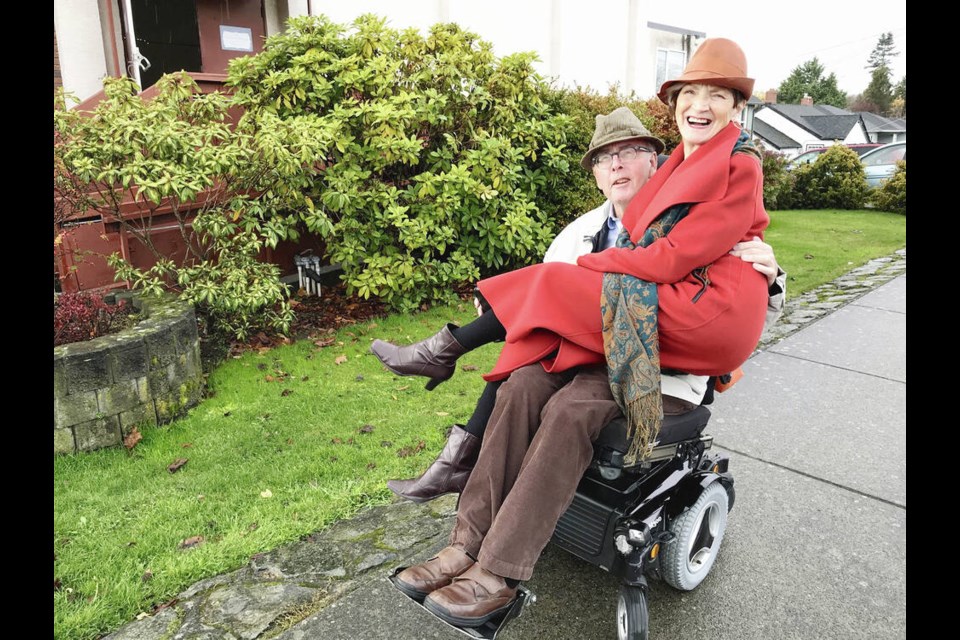The Capital Regional District transportation committee wants the province to make regulatory changes that would allow motorized wheelchairs and lightweight electric vehicles to use bike lanes.
At a meeting last week, Victoria city Coun. Dave Thompson put forward a successful motion asking the CRD board to advocate to the provincial government to consider amending the Motor Vehicle Act to allow electric wheelchairs and mobility scooters. The motion was amended to include other “micromobility” devices, defined in a CRD report as “lightweight electric vehicles operated at low speeds such as e-bikes and electronic kick scooters.”
Thompson, who sits on the transportation committee, said he has seen a lot of people in electric wheelchairs and mobility scooters using bike lanes in the city and on regional trails, and the City of Victoria has been asking for the changes for several years.
A person using an electric wheelchair or a mobility scooter is considered a pedestrian and has all the same rights and duties as a pedestrian, including a requirement to operate on a sidewalk when one is available, the Motor Vehicle Act says.
Victoria Coun. Jeremy Caradonna said the Motor Vehicle Act needs to evolve to accommodate the new transportation devices becoming available, such as electric skateboards and electric scooters.
“These devices are already on our streets and already in our cycling facilities, but currently they occupy a grey area. What we’re asking here is the MVA needs to evolve pretty quickly and regulate and normalize the use and bring some safety,” he said.
Peter Foran, who uses a motorized wheelchair, said he prefers to use bike lanes in Victoria, because many sidewalks are uneven, with tree roots pushing slabs up, and cracks in the pavement that make them difficult to navigate.
Foran fell out of his wheelchair several years ago on an uneven sidewalk and fractured his hip.
He feels he’s in the way when he’s on the sidewalk.
“I feel awkward in the sidewalk and people are looking at their cellphones or they’ve got a cup of coffee in their hands. They don’t know quite how to handle the wheelchairs sometimes. And I find that I’m less bothered if I’m on the bike lane,” he said.
Capital Bike supports allowing people on mobility aids in city bike infrastructure.
“There’s not that much in the way of a compelling reason to say no,” said Douglas Baer, co鈥慶hair of Capital Bike’s advocacy committee.
Eric Doherty, a transportation planner and co-lead of Greater Victoria Acting Together’s climate justice team, has been advocating on the issue for about a decade. He has talked to people who use mobility scooters who don’t travel in the bike lanes, because they know it’s not legal and they don’t want to break any rules even if police aren’t going to ticket them, he said.
Doherty said the province has amended the Motor Vehicle Act to allow mobility aids in bike lanes but it hasn’t created regulations to bring them into effect.
“It just doesn’t seem to have been a political priority to get it done,” he said.
Asked if the province is considering changes, a spokesperson for the Ministry of Transportation and Infrastructure said the ministry “continues to work with local governments and road safety partners to look for opportunities to expand safe access to active transportation infrastructure.”
The motion will go to the CRD board March 13 for a vote on whether to move forward with advocating to the province.
>>> To comment on this article, write a letter to the editor: [email protected]



